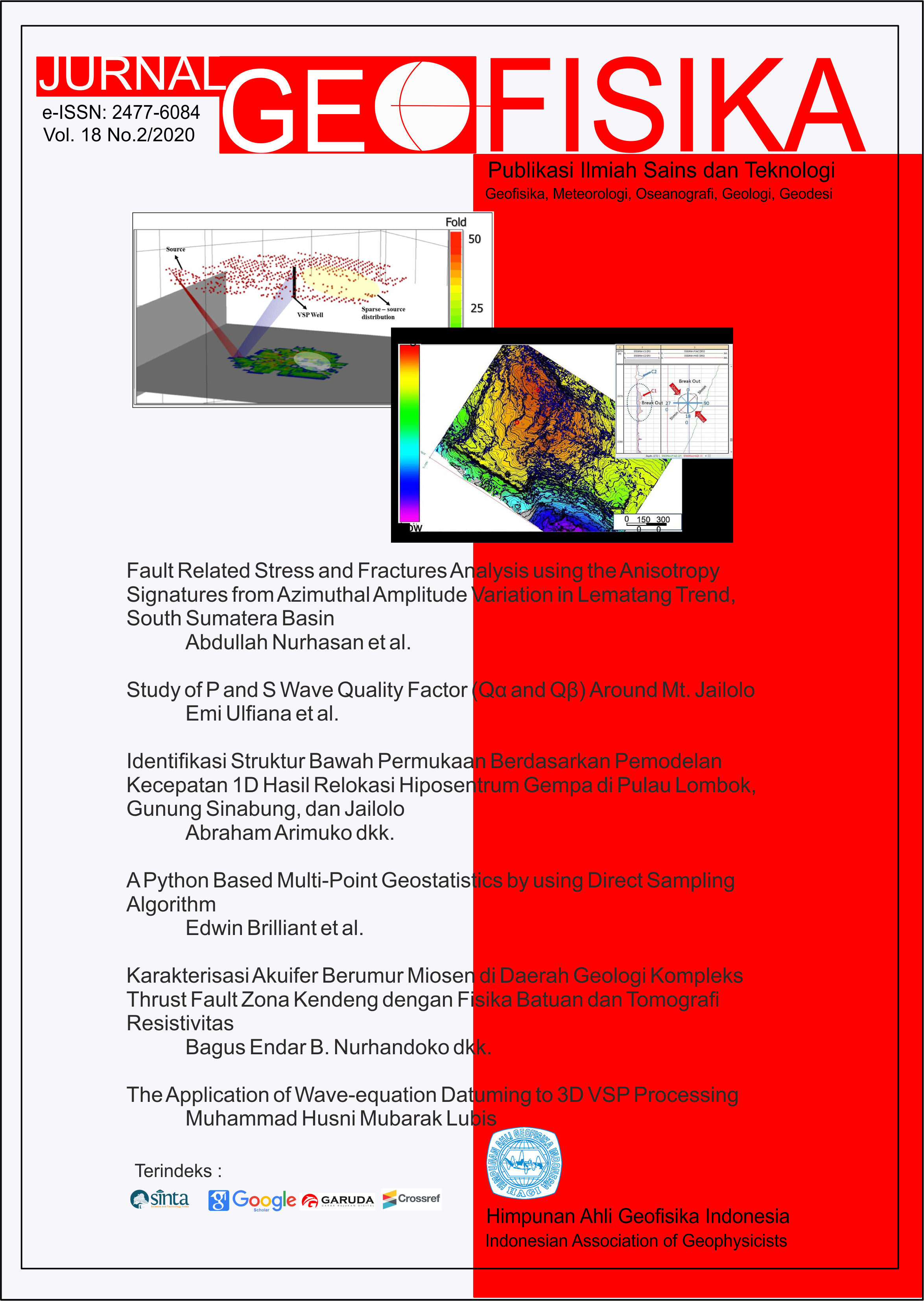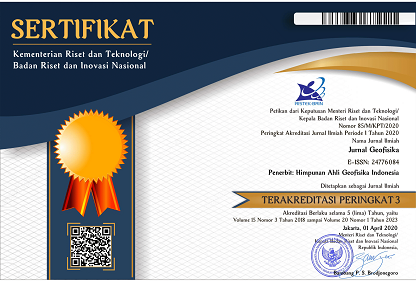A Python Based Multi-Point Geostatistics by using Direct Sampling Algorithm
Keywords
multi-point geostatistics, direct sampling, training image, pythonAbstract
Multi-Point Geostatistics (MPS) is a type of geostatistical method used to estimate the value of an unsampled location by utilizing several data points around it simultaneously. The MPS method estimates it by defining a model based on initial data in the form of a training image, which is a collection of data in the form of a geological conceptual model in the research area with the integration of geological and geophysical knowledge. The MPS method is currently starting to develop because it differs from conventional covariance-based geostatistical methods such as simple kriging and ordinary kriging, which only use a variogram based on the relationship between two points rapidly. In this study, we evaluated the use of the MPS method by using a direct sampling algorithm with Python that will directly sample the training image and then retrieve the data based on the sample data. A braided channel training image is used as the initial model to estimate the distribution of reservoir properties in lithology with sand and shale types. This study shows that MPS could reconstruct geological features better than kriging.
References
Journel, A. G., 1983. Nonparametric estimation of spatial distributions, Math. Geol Vol 15, pp. 445-468. https://doi.org/10.1007/BF01031292
Kelkar, M., Perez, G., and Chopra, A., 2002. Applied geostatistics for reservoir characterization (p. 264). Richardson, TX: Society of Petroleum Engineers
Mariethoz, G., 2009, Ph.D dissertation, Universite of Neuchatel
Mariethoz, G., Renard, P., and Straubhaar, J., 2010. The Direct Sampling method to perform multiple‐point geostatistical simulations, Water Resources Research, Vol. 46, Issue 11. https://doi.org/10.1029/2008WR007621
Mariethoz G., 2018. When Should We Use Multiple-Point Geostatistics? Handbook of Mathematical Geosciences. Springer, Cham, pp. 645-654. https://doi.org/10.1007/978-3-319-78999-6_31
Switzer, P., 1977. Estimation of spatial distributions from point sources with application to air pollution measurement. Technical Report No. 9, Siam Institute for Mathematics and Society

This work is licensed under a Creative Commons Attribution 4.0 International License.
The copyright of all articles belongs to the authors. All other copyrights is held by the Journal











